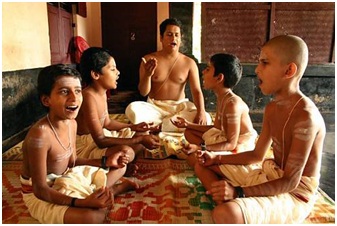


- A large portion of ancient Indian literature is a manifestation of the spoken word and it belongs to the oral tradition as far as its preservation is concerned.
- The Vedas have been preserved without the loss of a single syllable through a complex and intricate system of recital down the centuries.
- The writing was introduced much later in Indian history due to the influence of the foreign scholars and literature as writing emerged only during the British regime.
- Indian Literature refers to the literature produced on the Indian subcontinent. The earliest works of Indian Literature were orally transmitted. Sanskrit literature begins with the Rig Veda.
- The Sanskrit epics Ramayana and Mahabarata appeared towards the end of the first millennium BCE.
- Even though majority of the literary works which have survived from the ancient Indian literature are religious text, it is not right to define ancient Indian literature only based on religion.
- Indian literature includes everything that can be included under “literature” broadly- religious and mundane, epic and lyrics, dramatic and didactic poetry, narrative and scientific prose along with oral poetry and song.
- The Rig Veda was followed by Yajur Veda, Sama Veda, and Atharva Veda. There are other works after Vedas known as Brahmanas and Aryankas followed by philosophical doctrines of Upanishads. These form the part of Shruti literature.
- Classical Sanskrit literature, Tamil Sangam Literature and Pali Literature flourished in the first few centuries of the first millennium CE.
- Literature in Kannada and Telugu appeared in the 9th and 11th Centuries respectively. Later Literature in Marathi, Bengali, Hindi, Persian, and Urdu began to appear.
- All Indian languages, except Sanskrit, when they reached the status of writing, continued to develop their literature, drawing inspiration from both written and oral traditions.
- In India, the oral tradition does not belong to a pre-literate age representing a primary condition of civilisation. On the other hand, both traditions can co-exist in a given period of Indian history.
- The folk-traditions have been alive even during the present century. The main reason for this curious co-existence of these traditions is the fact that these two traditions, although they represent separate sets of values, are not ethically different from each other.
- We don't know what will happen to the oral tradition in modern times of urbanisation and industrialisation. Campaigning for complete literacy has gained speed and we know that the purpose is purely political.
- The best we can do is to preserve some of the skills from total extinction. Some of our religious rituals in which recitals are compulsory and some of our art forms in which eloquence is an inevitable element can be of great help.
Related Articles


